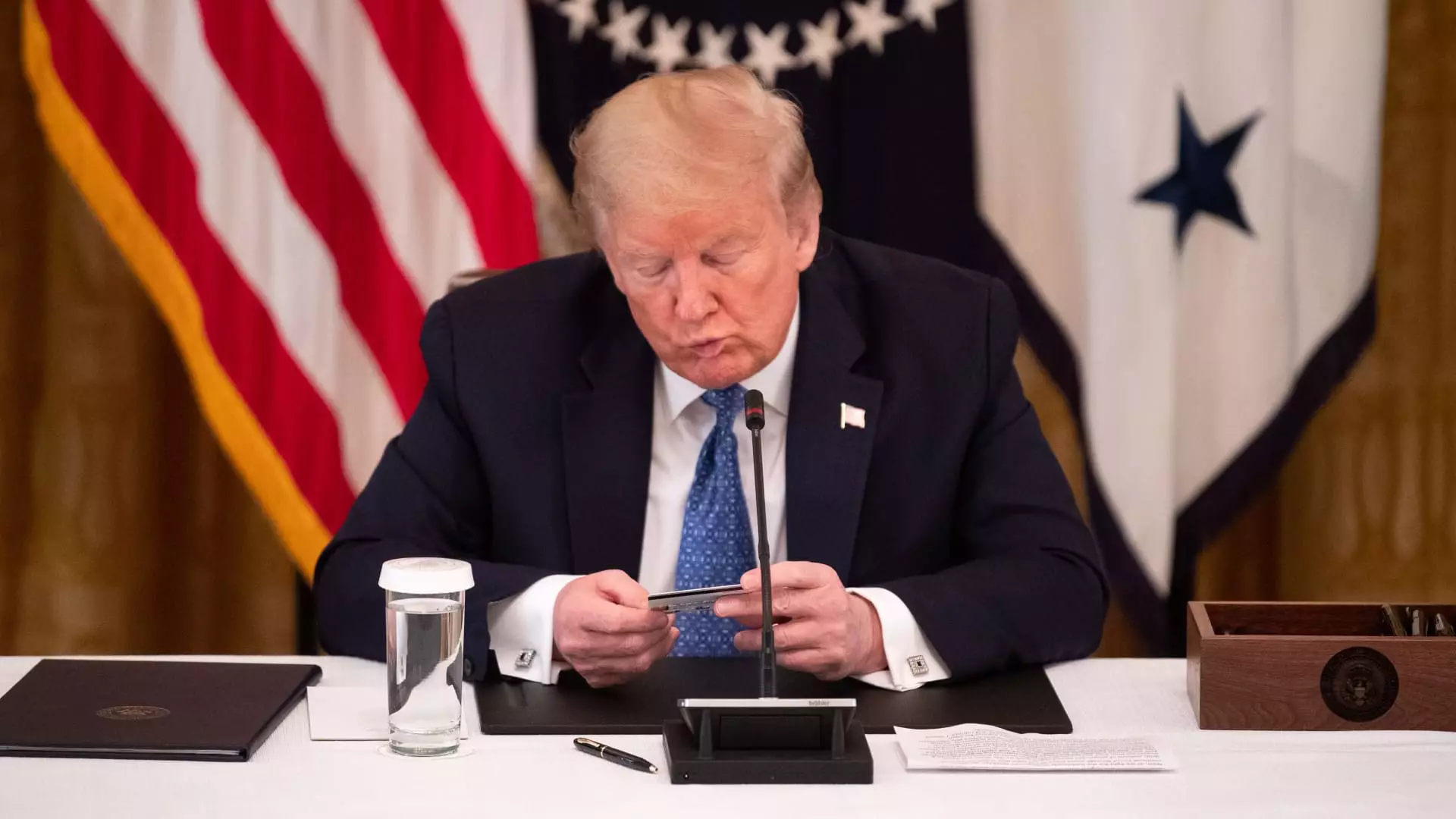The launch of Donald Trump’s new cryptocurrency project, World Liberty Financial (WLF), has not gone as smoothly as anticipated, raising concerns about its viability in the competitive crypto market. Despite initial enthusiasm, marked by claims from project co-founder Zachary Folkman that over 100,000 individuals were on the whitelist to participate, technical issues plagued the launch, limiting its financial success and casting a shadow over the project’s future.
World Liberty Financial aimed to establish itself as a cryptocurrency bank, but the reality of the launch exposed critical weaknesses. On the day of the token sale, significant outages on WLF’s website left many potential investors unable to purchase tokens. This downtime proved detrimental, resulting in just 4,300 unique wallet addresses holding tokens by Tuesday afternoon, a mere 4% of those who registered. The disconnect between the vendor’s anticipated interest and actual participation raised questions about the marketing effectiveness and operational readiness of the WLF team.
Despite claims from WLF that they sold over 532 million tokens at a price of 15 cents each, this figure constitutes less than 3% of the total 20 billion tokens made available for public sale. Such sluggish sales figures indicate that investor interest may not match initial projections, especially when the website reoccurred with maintenance messages rather than facilitating transactions. In the high-stakes world of cryptocurrency, these early missteps could significantly dampen future investment exploration.
As the Republican presidential nominee, the stakes for Trump and his family are exceptionally high. With just weeks away from the election, the poorly executed launch of WLF could serve as a distraction. This situation prompts speculation regarding how it might influence Donald Trump’s political capital. The connections between the crypto venture and Trump’s campaign may render the project more vulnerable to scrutiny from political opponents and investors alike.
Moreover, the lack of transparency and clarity surrounding the WLF project raises red flags. The absence of a formal business plan or detailed white paper, which is customary in cryptocurrency projects, has fuelled skepticism. It’s unclear how this venture will genuinely operate within the decentralized finance (DeFi) ecosystem or what concrete benefits it offers investors. The vagueness surrounding its operational framework may hinder future funding rounds, especially from traditional investment communities indifferent to flashy marketing without substance.
Investment Strategy and Regulatory Concerns
WLF’s roadmap indicates a goal to raise $300 million at a $1.5 billion valuation during its initial sale. Investors were informed that 20% of the tokens would be allocated to the founding team, which raised eyebrows given the common expectation of investor priorities in early-stage cryptocurrency offerings. Additionally, the project’s attempt to follow Regulation D for capital raising indicates a strategy aimed at sidestepping certain regulatory requirements, which may further complicate perceptions of legitimacy.
However, there are concerns about the restrictions imposed under Regulation D, particularly associated with limiting sales to accredited investors whose qualifications might dissuade broader public participation. This narrow eligibility may contradict the interest generated by the notion of a democratized financial avenue that cryptocurrencies generally promote. Without a wide investor base, WLF risks reducing its potential liquidity and market relevance.
Despite the rocky start, WLF leaders emphasize ambitions to innovate in the crypto space, focusing on lending, borrowing, and investing in digital assets. They aim to gain approval from trusted DeFi platforms like Aave, which denotes a pursuit of credibility as the project struggles to escape the shadows of its initial launch failures.
Conclusively, while the ambition behind WLF is notable, the execution of its rollout warrants critical appraisal. As developments unfold, it remains to be seen whether WLF can effectively rally the support it needs to thrive in an increasingly discerning cryptocurrency landscape — a task demanding both strong technological infrastructure and an ability to inspire confidence in potential investors. In a realm where credibility holds paramount importance, the lessons learned from this tumultuous launch may shape the trajectory of both WLF and Trump’s interconnected political and financial ambitions.

